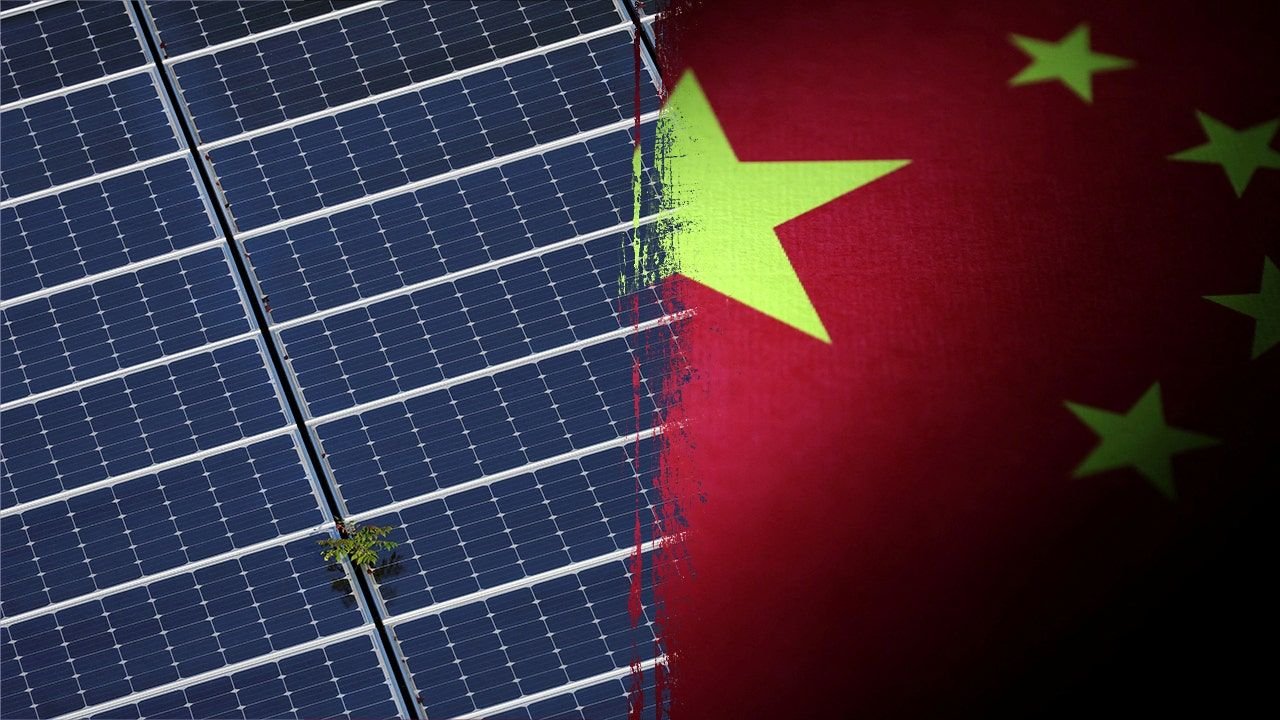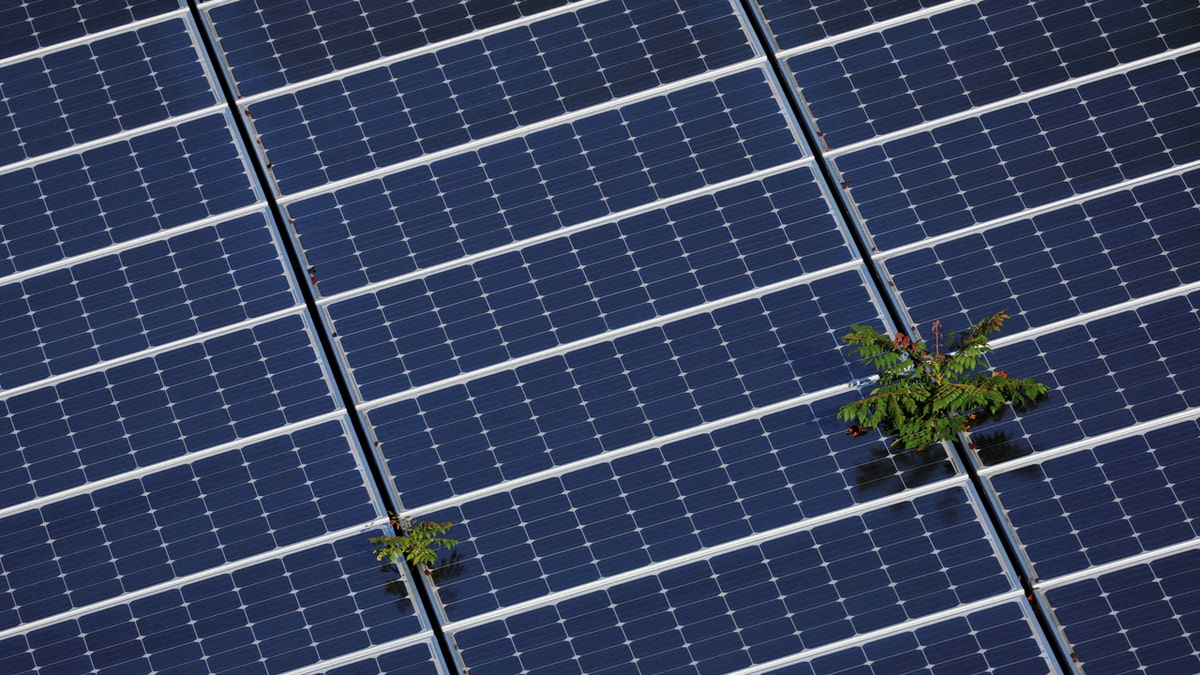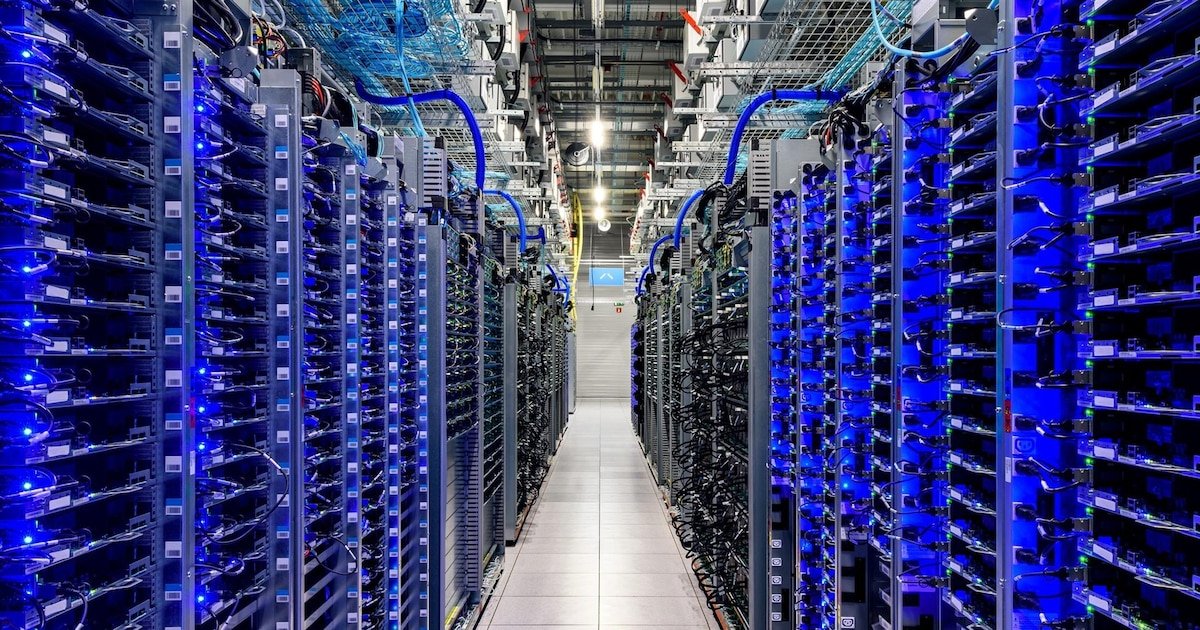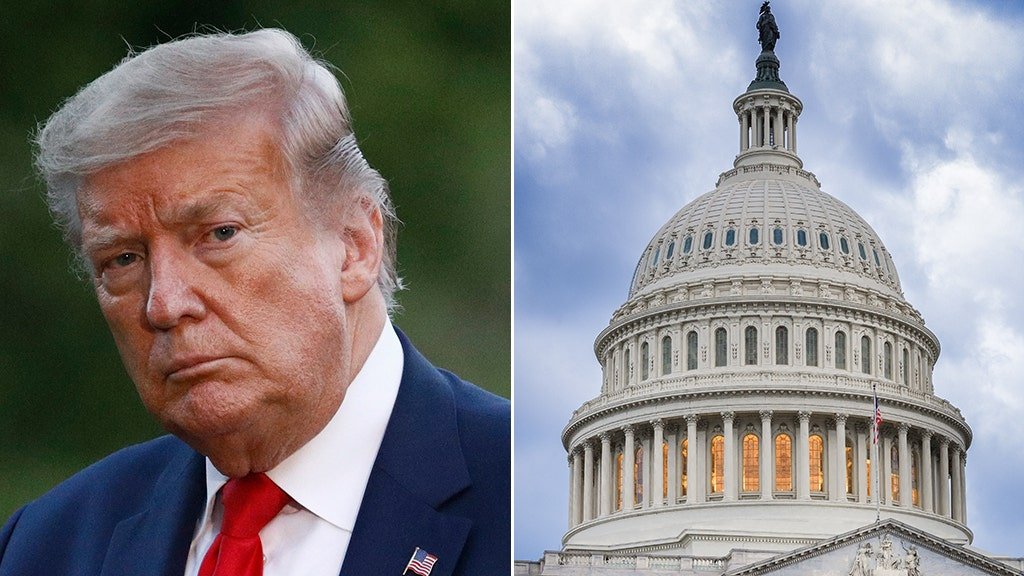INTERNACIONAL
Hidden communications devices found in Chinese solar power inverters spark security alarm

U.S. energy officials are reassessing the risk posed by Chinese-made devices that play a critical role in renewable energy infrastructure after unexplained communication equipment was found inside some of them, two people familiar with the matter said.
Power inverters, which are predominantly produced in China, are used throughout the world to connect solar panels and wind turbines to electricity grids. They are also found in batteries, heat pumps and electric vehicle chargers.
While inverters are built to allow remote access for updates and maintenance, the utility companies that use them typically install firewalls to prevent direct communication back to China.
CHINESE OFFICIALS CLAIMED BEHIND CLOSED DOORS PRC PLAYED ROLE IN US CYBERATTACKS: REPORT
However, rogue communication devices not listed in product documents have been found in some Chinese solar power inverters by U.S. experts who strip down equipment hooked up to grids to check for security issues, the two people said.
Over the past nine months, undocumented communication devices, including cellular radios, have also been found in some batteries from multiple Chinese suppliers, one of them said.
Reuters was unable to determine how many solar power inverters and batteries they have looked at.
Solar panels are arrayed on Earth Day in Northfield, Massachusetts, on April 22, 2022. (Reuters/Brian Snyder/File Photo)
The rogue components provide additional, undocumented communication channels that could allow firewalls to be circumvented remotely, with potentially catastrophic consequences, the two people said.
Both declined to be named because they did not have permission to speak to the media.
«We know that China believes there is value in placing at least some elements of our core infrastructure at risk of destruction or disruption,» said Mike Rogers, a former director of the U.S. National Security Agency. «I think that the Chinese are, in part, hoping that the widespread use of inverters limits the options that the West has to deal with the security issue.»
A spokesperson for the Chinese embassy in Washington said: «We oppose the generalization of the concept of national security, distorting and smearing China’s infrastructure achievements.»
Using the rogue communication devices to skirt firewalls and switch off inverters remotely, or change their settings, could destabilize power grids, damage energy infrastructure, and trigger widespread blackouts, experts said.
«That effectively means there is a built-in way to physically destroy the grid,» one of the people said,
The two people declined to name the Chinese manufacturers of the inverters and batteries with extra communication devices, nor say how many they had found in total.
The existence of the rogue devices has not previously been reported. The U.S. government has not publicly acknowledged the discoveries.
Asked for comment, the U.S. Department of Energy (DOE) said it continually assesses risk associated with emerging technologies and that there were significant challenges with manufacturers disclosing and documenting functionalities.
«While this functionality may not have malicious intent, it is critical for those procuring to have a full understanding of the capabilities of the products received,» a spokesperson said.
Work is ongoing to address any gaps in disclosures through «Software Bill of Materials» – or inventories of all the components that make up a software application – and other contractual requirements, the spokesperson said.
Trusted Equipment
As U.S.-China tensions escalate, the U.S. and others are reassessing China’s role in strategic infrastructure because of concerns about potential security vulnerabilities, two former government officials said.
«The threat we face from the Chinese Communist Party (CCP) is real and growing. Whether it’s telecom hacks or remotely accessing solar and battery inverters, the CCP stops at nothing to target our sensitive infrastructure and components,» said U.S. Representative August Pfluger, a Republican member of the Committee on Homeland Security.
«It is about time we ramp up our efforts to show China that compromising us will no longer be acceptable,» he told Reuters.

Chinese energy infrastructure plays a large role in the power grids of many European countries. (Reuters/Pascal Rossignol/File Photo)
In February, two U.S. Senators introduced the Decoupling from Foreign Adversarial Battery Dependence Act, banning the Department of Homeland Security from purchasing batteries from some Chinese entities, starting October 2027, due to national security concerns.
The bill was referred to the Senate Committee on Homeland Security and Governmental Affairs on March 11 and has yet to be enacted.
THE REAL BREAKTHROUGH IN U.S.–CHINA TRADE TALKS IS MUCH BIGGER THAN JUST TARIFFS
It aims to prevent Homeland Security from procuring batteries from six Chinese companies Washington says are closely linked to the Chinese Communist Party: Contemporary Amperex Technology Company (CATL), BYD Company, Envision Energy, EVE Energy Company, Hithium Energy Storage Technology Company, and Gotion High-tech Company.
None of the companies responded to requests for comment.
Utilities are now preparing for similar bans on Chinese inverter manufacturers, three people with knowledge of the matter said.
Some utilities, including Florida’s largest power supplier, Florida Power & Light Company, are attempting to minimize the use of Chinese inverters by sourcing equipment from elsewhere, according to two people familiar with the matter. FPL did not respond to requests for comment.
The DOE spokesperson said: «As more domestic manufacturing takes hold, DOE is working across the federal government to strengthen U.S. supply chains, providing additional opportunities to integrate trusted equipment into the power grid.»
‘Catastrophic Implications’
Huawei is the world’s largest supplier of inverters, accounting for 29% of shipments globally in 2022, followed by Chinese peers Sungrow and Ginlong Solis, according to consultancy Wood Mackenzie.
German solar developer 1Komma5 said, however, that it avoids Huawei inverters, because of the brand’s associations with security risks.
«Ten years ago, if you switched off the Chinese inverters, it would not have caused a dramatic thing to happen to European grids, but now the critical mass is much larger,» 1Komma5 Chief Executive Philipp Schroeder said.
«China’s dominance is becoming a bigger issue because of the growing renewables capacity on Western grids and the increased likelihood of a prolonged and serious confrontation between China and the West,» he said.
Since 2019, the U.S. has restricted Huawei’s access to U.S. technology, accusing the company of activities contrary to national security, which Huawei denies.
CHINESE IMPORTS TO US PLUMMET TO LOWEST LEVELS SINCE PANDEMIC AMID TRUMP TARIFFS
Chinese companies are required by law to cooperate with China’s intelligence agencies, giving the government potential control over Chinese-made inverters connected to foreign grids, experts said.
While Huawei decided to leave the U.S. inverter market in 2019 – the year its 5G telecoms equipment was banned – it remains a dominant supplier elsewhere.
Huawei declined to comment.
In Europe, exercising control over just 3 to 4 gigawatts of energy could cause widespread disruption to electricity supplies, experts said.
The European Solar Manufacturing Council estimates over 200 GW of European solar power capacity is linked to inverters made in China – equivalent to more than 200 nuclear power plants.
At the end of last year, there was 338 GW of installed solar power in Europe, according to industry association SolarPower Europe.
«If you remotely control a large enough number of home solar inverters, and do something nefarious at once, that could have catastrophic implications to the grid for a prolonged period of time,» said Uri Sadot, cybersecurity program director at Israeli inverter manufacturer SolarEdge.
Strategic Dependencies
Other countries such as Lithuania and Estonia acknowledge the threats to energy security. In November, the Lithuanian government passed a law blocking remote Chinese access to solar, wind and battery installations above 100 kilowatts – by default restricting the use of Chinese inverters.
Energy minister Zygimantas Vaiciunas said this could be extended to smaller rooftop solar installations.
Estonia’s Director General of the Foreign Intelligence Service, Kaupo Rosin, said the country could be at risk of blackmail from China if it did not ban Chinese technology in crucial parts of the economy, such as solar inverters.
Estonia’s Ministries of Defense and Climate declined to comment when asked if they had taken any action.
In Britain, the government’s review of Chinese renewable energy technology in the energy system – due to be concluded in the coming months – includes looking at inverters, a person familiar with the matter said.
In November, solar power inverters in the U.S. and elsewhere were disabled from China, highlighting the risk of foreign influence over local electricity supplies and causing concern among government officials, three people familiar with the matter said.
Reuters was unable to determine how many inverters were switched off, or the extent of disruption to grids. The DOE declined to comment on the incident.

Plants grow through an array of solar panels in Fort Lauderdale, Florida, on May 6, 2022. (Reuters/Brian Snyder/File Photo)
The incident led to a commercial dispute between inverter suppliers Sol-Ark and Deye, the people said.
«Sol-Ark does not comment on vendor relationships, including any relationship with Deye, nor does it have any control over inverters that are not branded Sol-Ark, as was the case in the November 2024 situation you referenced,» a Sol-Ark spokesperson said.
Deye did not respond to requests for comment.
The energy sector is trailing other industries such as telecoms and semiconductors, where regulations have been introduced in Europe and the U.S. to mitigate China’s dominance.
Security analysts say this is partly because decisions about whether to secure energy infrastructure are mostly dictated by the size of any installation.
CLICK HERE TO GET THE FOX NEWS APP
Household solar or battery storage systems fall below thresholds where security requirements typically kick-in, they said, despite now contributing a significant share of power on many Western grids.
NATO, the 32-country Western security alliance, said China’s efforts to control member states’ critical infrastructure – including inverters – were intensifying.
«We must identify strategic dependencies and take steps to reduce them,» said a NATO official.
INTERNACIONAL
Rosas negras y ruinas sumergidas: así es Halfeti, la ciudad escondida en el Éufrates que resurgió entre el mito y la modernidad

En el sureste de Turquía, a orillas del legendario río Éufrates, una ciudad emerge parcialmente de las aguas, envuelta en misterio y leyendas.
Halfeti, conocida como la “ciudad sumergida”, tuvo que transformar radicalmente su fisionomía tras quedar parcialmente bajo el agua por la construcción de la presa de Birecik, en el año 2000.
Actualmente, este enclave no solo atrae a visitantes por su singular paisaje y arquitectura sumergida, sino que también fascina al mundo con el enigma de sus famosas “rosas negras“, flores que han dado lugar a mitos, debates científicos y un renovado sentido de identidad local, según reportó CNN Travel.

A principios del nuevo milenio, la construcción de la presa de Birecik, una estructura de 60 metros de altura y 2,4 kilómetros de ancho, provocó la inundación de dos pueblos y diez aldeas en la provincia de Sanliurfa.
Según consignan medios locales, alrededor del 40% de Halfeti, que contaba con unos 2.600 habitantes, quedó sumergido bajo las aguas. Entre las edificaciones perdidas se encontraban numerosas casas de piedra, comercios y una parte significativa de la Merkez Camii, la mezquita central del siglo XIX.
La presa de Birecik forma parte de un ambicioso plan de desarrollo para el sureste de Anatolia, que incluye varias de estas estructuras a lo largo de los ríos Éufrates y Tigris. Su embalse, de 52 kilómetros cuadrados, se diseñó para regar 70.000 hectáreas de tierras agrícolas y generar unos 2.500 GWh de electricidad al año, suficiente para abastecer a casi un millón de hogares turcos.

Sin embargo, el impacto en la población local fue profundo y, en muchos casos, doloroso. Más de 6.000 personas tuvieron que ser reubicadas, y la comunidad perdió parte de su patrimonio tangible e intangible. Erhan Yildirim, investigador local, historiador y guía profesional, expresó a CNN Travel: “No se puede recuperar la cultura; la cultura permanece bajo el agua”.
Antes de la inundación, la economía de esta población era, básicamente, agropecuaria, con una reputación especial por la producción de pistachos. Muslum Karaman, operador de barco local, relató a CNN Travel que “la gente de Halfeti solía ganarse la vida con la cría de ganado y la agricultura”. Sin embargo, la llegada de la presa y la consiguiente transformación del entorno los obligaron a buscar nuevas formas de subsistencia.
Karaman explicó que la ciudad “ha cambiado completamente hacia el turismo“, y que muchos habitantes han adaptado sus viviendas para convertirlas en restaurantes, boutique y cafeterías. Esta reinvención económica le permitió a la comunidad mejorar su calidad de vida y aprovechar el creciente interés de los visitantes por la singularidad de Halfeti.

En la actualidad, Halfeti se posiciona como un destino turístico singular. Los visitantes llegan atraídos por la posibilidad de recorrer en barco, moto acuática o flyboard la arquitectura sumergida de la ciudad antigua.
El buceo se ha convertido en una de las actividades favoritas, impulsada por la apneísta turca Şahika Ercümen, quien en 2020 realizó una inmersión en Halfeti para sensibilizar sobre la contaminación por plásticos.
Además de la arquitectura sumergida, los turistas pueden realizar excursiones en barco hasta la fortaleza de Rumkale, situada a orillas del Éufrates. Este sitio histórico, cuyos cimientos datan del Imperio bizantino, permite a los visitantes explorar restos de fortificaciones armenias y conocer la compleja historia de la región, marcada por el paso de diferentes civilizaciones.

Uno de los mayores atractivos de Halfeti es el misterio de sus “rosas negras“, flores que han dado lugar a leyendas y debates científicos. Según la tradición local, es el único lugar del mundo donde florecen.
Yildirim sostiene que “si cultivas la rosa negra en cualquier otro lugar, nunca te dará el mismo color”. No obstante, expertos internacionales cuestionan su existencia. Michael Marriott, reconocido especialista floricultura, declaró a CNN Travel: “No creo que ninguna de las llamadas flores negras sea realmente negra”.
Por otra parte, Guy Barter, horticultor jefe de la Royal Horticultural Society del Reino Unido, coincide en que “las rosas negras, y en general las flores negras, rara vez son completamente negras, si no de un granate muy intenso o, como en este caso, de un rojo muy oscuro”.
El color oscuro de las rosas de Halfeti se atribuye a las condiciones únicas del suelo y el clima de la región. Marriott sugiere que los agricultores locales podrían estar utilizando raíces originales de las rosas, capaces de prosperar en suelos más ácidos, lo que oscurece los pétalos. Birsen Aşağı, vendedora local, atribuye el fenómeno a las “condiciones climáticas de aquí”.

A pesar de las dudas sobre su autenticidad, las rosas negras de Halfeti han adquirido fama internacional. Marcas como la perfumista británica Penhaligon’s han lanzado fragancias inspiradas en la flor, y los productos derivados se han convertido en un símbolo de la ciudad.
Las leyendas locales enriquecen el mito de la rosa negra. Una de ellas narra la historia de Adir, un arquitecto que construyó la mezquita de la ciudad, y su nieta Vartuhi, quien cultivaba las rosas más hermosas.
Vartuhi se enamoró de Firat, un huérfano del otro lado del río, pero su amor fue prohibido. Desesperados, ambos se arrojaron al Éufrates y, desde entonces, las rosas de Halfeti florecen negras en señal de luto.
Otra versión, relatada por Yildirim, atribuye la flor al Diablo, quien, tras el asesinato de una niña inocente, decretó que la rosa negra solo florecería en el lugar de su muerte, como símbolo de dolor y venganza.

A pocos kilómetros del pueblo, la fortaleza de Rumkale se alza como testigo de la historia milenaria de la región. Según CNN Travel, sus cimientos datan del Imperio bizantino, entre los siglos V y VI, aunque existen indicios de estructuras anteriores.
Durante los siglos XII y XIII, la fortaleza fue residencia del Catholicós, líder espiritual de la Iglesia armenia, y posteriormente cayó en manos de los mamelucos en 1292, antes de pasar al control del Imperio Otomano. La arquitectura de Rumkale, visible desde el río, recuerda la compleja y a menudo turbulenta historia de Anatolia, marcada por el cruce de culturas y religiones.
En 2013, Halfeti fue reconocida como parte de la red Cittaslow, un movimiento internacional que promueve la calidad de vida y la preservación de la cultura local.
INTERNACIONAL
Green Valley en América Latina: la oportunidad de la infraestructura digital verde en la era de la IA

Durante décadas, la infraestructura tecnológica desde los chips hasta los centros de datos fue un tema relegado a los márgenes de la discusión económica y política. Hoy, esa infraestructura es protagonista central. Es allí donde convergen la energía y los datos para impulsar la inteligencia artificial (IA), y donde se define buena parte de la competitividad futura de los países. En este nuevo mapa, América Latina y el Caribe tienen una ventana de oportunidad concreta: consolidarse como una región atractiva para el desarrollo de centros de datos verdes (green data centers), alimentados por energías renovables y articulados a una red regional que impulse la industrialización de servicios basados en IA.
La ventaja comparativa de la región es sólida y múltiple. Esta se basa en su matriz energética, su geografía y su capital humano. Según datos del Banco Mundial y la Agencia Internacional de Energía (AIE), más del 60% de la generación eléctrica en América Latina proviene de fuentes renovables, superando a regiones como Europa Occidental (40%) o Norteamérica (30%). Países como Uruguay, Paraguay y Costa Rica ya operan con matrices energéticas 100% limpias prácticamente, mientras que Brasil supera el 80% con una mezcla de hidroeléctrica, solar y eólica. Esta condición no es trivial. Para modelos de IA de gran escala, el costo energético puede representar hasta el 60% del costo total operativo de un centro de datos. Según datos de la UIT, el consumo de electricidad de Alphabet, Amazon y Microsoft alcanzó los 100 TWh en 2023, prácticamente lo que consumen juntos Colombia y República Dominicana en un año.
Sumado a lo anterior, la geografía y el clima juegan a favor de la región. Las zonas de altiplano, con temperaturas medias estables y buena conectividad, permiten reducir el gasto en enfriamiento uno de los mayores costos energéticos en operación de servidores. Bogotá, Quito, Montevideo o partes del sur de Brasil ofrecen condiciones ideales para alojar infraestructura de cómputo intensivo.
La estructura demográfica también representa un activo con una población de más de 400 millones de personas en edad laboral y un creciente número de profesionales en ciencia de datos, ingeniería de software, así como en redes. Las plataformas de formación como Platzi, Henry o Digital House están nutriendo un ecosistema de talento regional. Paulatinamente, universidades en Brasil, Chile, Colombia o México han avanzado en currículos orientados a IA y computación de alto rendimiento.
En el ámbito internacional, la oportunidad para captar inversión extranjera directa es clara. Europa, bajo el marco del Pacto Verde y la taxonomía de finanzas sostenibles, exigirá cada vez más una trazabilidad clara de la huella de carbono en las cadenas de valor digitales. Una empresa europea que entrena sus modelos en un green datacenter certificado en América Latina puede reducir sus emisiones reportadas y cumplir así sus compromisos climáticos. Asimismo, los avances tecnológicos están impulsando que las energías renovables sean incluso más asequibles que las tradicionales. Todo ello configura argumentos de pesos de atracción de capital europeo, asiático o norteamericano.
Ahora bien, la oportunidad no radica solamente en hospedar servidores, ni en hacerlo individualmente país a país. El valor agregado está en que estos centros de datos se conviertan en motores de desarrollo tecnológico local, con lógica de integración regional. Esto exige políticas de encadenamiento productivo que prioricen proveedores locales de infraestructura, servicios de nube, software y ciberseguridad; acceso preferencial a pymes tecnológicas; y condiciones para que universidades y centros de investigación accedan a capacidad computacional como bien público. Y articulación de una red federada de centros de datos interconectados, con redundancia, interoperabilidad y gobernanza compartida, que permita: el entrenamiento distribuido de modelos de IA; el almacenamiento de grandes volúmenes de datos públicos y privados; la provisión de servicios a gobiernos, empresas y universidades. Esta red también puede convertirse en un activo geopolítico, al reducir la dependencia tecnológica con respecto a infraestructuras extrarregionales.
- Establecer marcos regulatorios nacionales y regionales (o al menos entre algunos países impulsores) para green datacenters, con criterios técnicos de certificación.
- Establecer incentivos tributarios y requisitos de eficiencia energética.
- Crear un fondo regional de infraestructura digital verde, con apoyo de los bancos regionales (BID, CAF, Banco Mundial) y bancos de desarrollo nacionales, que cofinancie proyectos con alto impacto en empleo, transición energética y digitalización.
- Incentivar consorcios público-privados para el desarrollo de modelos de IA sectoriales, en salud, educación, movilidad, energía o agroindustria, utilizando la capacidad de cómputo regional como palanca de innovación.
- Incorporar cláusulas de sostenibilidad digital en los acuerdos comerciales, incluyendo interoperabilidad de datos, transferencia tecnológica y estándares abiertos para plataformas de IA.
- Establecer un observatorio latinoamericano de huella digital y climática, que mida el impacto ambiental de la infraestructura tecnológica y también promueva prácticas responsables.
La buena noticia, además, es que en algunos países las políticas públicas están – esta vez sí – , acelerando el paso al ritmo de la oportunidad. Brasil ha aprobado incentivos fiscales para infraestructura digital con eficiencia energética. Chile presentó en 2022 su Hoja de Ruta de Centros de Datos al 2030 con metas de sostenibilidad. En México, estados como Querétaro han consolidado clústeres tecnológicos donde operan Oracle, Microsoft y AWS. A ellos esperamos que se unan Uruguay y Argentina, si avanzan con marcos regulatorios nacionales impulsados desde sus presidencias.
La región no necesita copiar Silicon Valley o Shenzhen. Puede crear su propio Green Valley: un ecosistema donde la infraestructura digital, y en particular los centros de datos verdes, estén al servicio de la sostenibilidad, la soberanía tecnológica y el desarrollo humano. El momento de actuar es ahora. La inteligencia artificial será el motor económico de las próximas décadas. América Latina puede ser no solo consumidora, sino productora y exportadora de soluciones si logra construir la infraestructura inteligente y verde que el siglo XXI exige.
INTERNACIONAL
Trump signs $9B rescissions package into law, revoking funding for foreign aid, NPR

NEWYou can now listen to Fox News articles!
President Donald Trump signed into law his roughly $9 billion rescissions package to scale back already approved federal funds for foreign aid and public broadcasting on Thursday, after both chambers of Congress approved the legislation earlier in the month, sources familiar to the matter have confirmed.
The signing marks another legislative victory for the Trump administration just two weeks after the president signed into law his massive tax and domestic policy measure, dubbed the «big, beautiful bill.»
The rescissions package pulls back nearly $8 billion in funding Congress already approved for the U.S. Agency for International Development (USAID), a previously independent agency that provided impoverished countries aid and offered development assistance.
However, the Trump administration has faced layoffs and has been absorbed into the State Department amid concerns from the Trump administration that the organization did not advance U.S. core interests.
‘LONG OVERDUE’: SENATE REPUBLICANS SLAM THROUGH TRUMP’S CLAWBACK PACKAGE WITH CUTS TO FOREIGN AID, NPR
President Donald Trump talks to reporters during a Cabinet meeting. (Getty Images)
The rescissions package also pulls more than $1 billion from the Corporation for Public Broadcasting (CPB) that provides federal funding for NPR and PBS.
The House previously approved its version of the rescissions package in June, and voted on the final version of the measure early on Friday after the Senate narrowly approved the measure by a 51-48 margin early on the morning of July 17. Republican Sens. Susan Collins of Maine and Lisa Murkowski of Alaska voted alongside Democrats to oppose the package.
Senate Majority Leader John Thune, R-S.D., said that the measure aligned with other priorities to eradicate waste, fraud and abuse within the federal government and is a step in the right direction.
«I appreciate all the work the administration has done in identifying wasteful spending,» Thune said in a speech ahead of the vote. «And now it’s time for the Senate to do its part to cut some of that waste out of the budget. It’s a small but important step toward fiscal sanity that we all should be able to agree is long overdue.»
SENATE MARCHES TOWARD PASSING TRUMP’S $9B CLAWBACK BILL AFTER DRAMATIC LATE-NIGHT VOTES

U.S. Senate Majority Leader John Thune (R-SD) heads to the Senate Chamber to vote on a bill on January 22, 2025 in Washington, DC. (Kayla Bartkowski/Getty Images)
Meanwhile, Democrats have said that the cuts to foreign aid are a win for China and Russia, and that the package puts national security at risk. Additionally, Democrats argue Republicans’ employment of rescissions sets a dangerous precedent that could jeopardize a host of programs down the line.
«If Republicans slash more American aid, it will create a dangerous vacuum that the Chinese Communist Party will continue to eagerly fill,» Senate Minority Leader Chuck Schumer, D-N.Y., said on July 15 on the Senate floor.
TRUMP’S $9 BILLION CLAWBACK PASSES FIRST SENATE TEST, WHILE MORE HURDLES AWAIT

A memo from a major liberal grassroots group called out Democratic lawmakers like Senate Minority Leader Chuck Schumer, D-N.Y., for their passive approach to resisting President Trump. (Kayla Bartkowski/Getty Images)
«They are using pocket rescissions to poison the bipartisan appropriations process, to break the law to steal funds that Congress appropriated, and they’re doing it at a party-line vote,» Schumer said. «Worse, they’re letting Donald Trump decide for himself which programs to defund, and that puts everything at risk – healthcare, education, food assistance, public health. Everything – everything – becomes at risk. That is what happens if a package like this is allowed to become law.»
CLICK HERE TO GET THE FOX NEWS APP
Although Trump previously attempted to advance a rescissions package in 2018 that also targeted foreign aid and public broadcasting funds during his first term, it failed to gain support in the Senate after Collins and then-Sen. Richard Burr, R-N.C., voted against it.
The last time Congress approved a rescissions package was in 1999.
Fox News’ Alex Miller contributed to this report.

 POLITICA3 días ago
POLITICA3 días ago🗳️ El chamuyo de las elecciones en la Provincia: se postulan, pero no a asumen

 POLITICA3 días ago
POLITICA3 días agoFuerte malestar en la CGT por la ausencia de gremialistas en las listas bonaerenses del peronismo

 ECONOMIA2 días ago
ECONOMIA2 días agoEl consumo en Argentina crece 4% en junio, ante menor inflación y más crédito






















